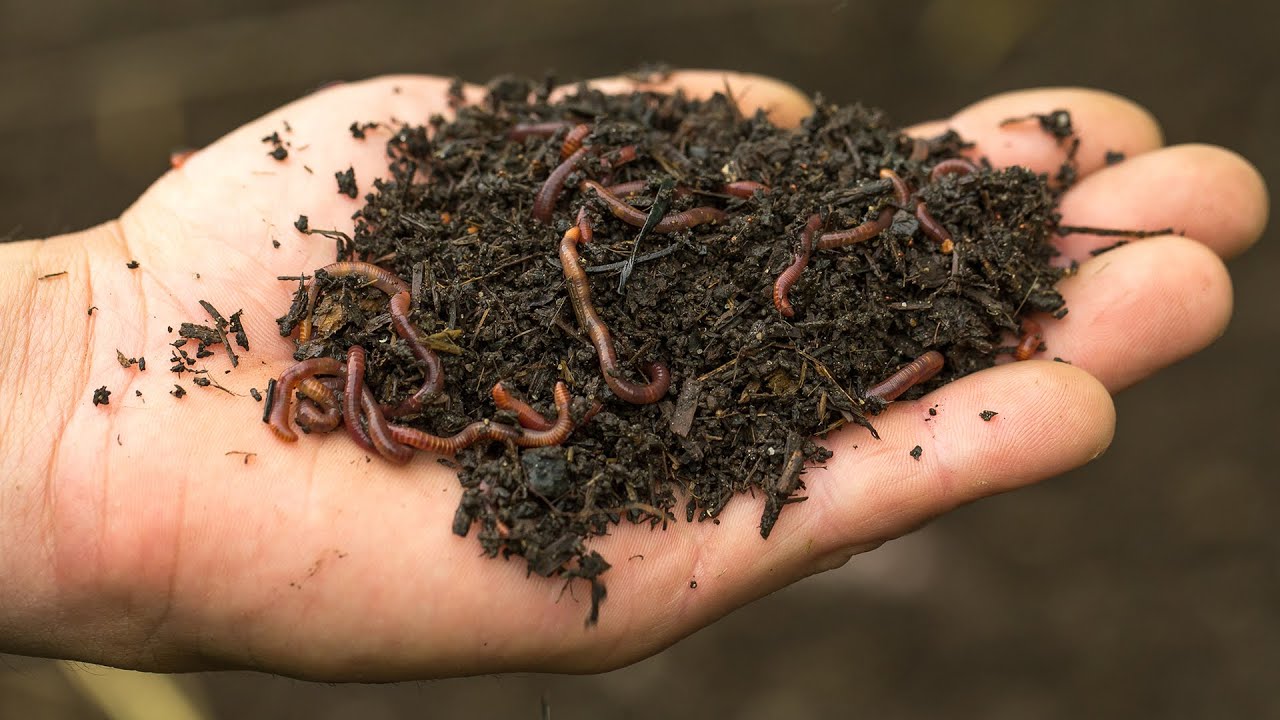Mastering Red Wiggler Composting: Necessary Practices for Healthy Composting
Wiki Article
Checking Out the Systems of Red Wiggler Composting: A Comprehensive Guide to the Process and Its Favorable Influence on Sustainable Horticulture Practices
The intricate systems of red wiggler composting, making use of the one-of-a-kind physiology of Eisenia fetida, provide a compelling opportunity for enhancing sustainable horticulture practices. As urban horticulture gains traction, recognizing the nuances of this composting technique ends up being progressively relevant.Comprehending Red Wigglers
Red wigglers, scientifically called Eisenia fetida, are a types of earthworm extremely related to for their performance in composting natural waste. These worms grow in nutrient-rich atmospheres, especially in decaying raw material, making them optimal for vermicomposting systems - Red Wiggler Composting. Defined by their reddish-brown coloration and fractional bodies, red wigglers are smaller than usual earthworms, usually gauging in between 3 to four inches in sizeTheir distinct physical traits boost their composting capabilities; for circumstances, they have a high reproductive rate, permitting populations to increase swiftly under suitable problems. Red wigglers eat organic product, damaging it down with their digestion systems, which results in nutrient-rich spreadings that function as an outstanding natural plant food. Their ravenous appetite enables them to process huge quantities of food waste efficiently, substantially reducing landfill contributions.
Along with their composting expertise, red wigglers play an important duty in dirt health and wellness. Red Wiggler Composting. They aerate the soil and promote the decay of raw material, further enhancing the dirt ecological community. Understanding the attributes and eco-friendly advantages of red wigglers is important for anybody seeking to apply sustainable gardening practices with efficient composting methods
The Composting Process
The composting process includes breaking down natural products right into nutrient-rich garden compost, a job that red wigglers succeed at due to their specialized gastrointestinal systems. These worms take in food scraps, lawn waste, and other raw material, transforming them into valuable compost via a collection of chemical and organic processes.At first, the raw material is blended with bedding products such as shredded paper or dried out fallen leaves, producing an optimum environment for the worms. As the red wigglers ingest this combination, they simplify via their digestive tract, where microorganisms further decompose the material. This procedure generates heat, advertising microbial task, which speeds up decay.

Advantages of Red Wiggler Composting
Numerous gardeners and eco-conscious individuals recognize the many advantages of red wiggler composting, making it a prominent selection for efficient waste administration. One of the key benefits is its capacity to substantially reduce organic waste in garbage dumps - Red Wiggler Composting. Red wigglers efficiently damage down kitchen scraps and other eco-friendly products, changing them right into nutrient-rich vermicompost that enriches soil healthMoreover, red wiggler composting boosts soil framework and fertility. The resulting vermicompost is including helpful microbes, which advertise plant development and improve nutrient retention. This natural fertilizer not only sustains lasting horticulture techniques however also lowers dependence on chemical plant foods, fostering a healthier ecosystem.
Additionally, red wiggler composting is a space-efficient technique, making it ideal for metropolitan garden enthusiasts with minimal area. The process can be carried out inside your home or outdoors, permitting year-round composting no matter environment problems. Moreover, red wigglers are low-maintenance organisms that need minimal care, making them accessible for novice garden enthusiasts.
Basically, the advantages of red wiggler composting extend beyond waste reduction; they add to much healthier soils, sustainable gardening methods, and environmental stewardship, placing it as a useful practice in modern horticulture.
Best Practices for Composting
For successful red wiggler composting, sticking to finest techniques is vital to maximize efficiency and make certain navigate to this site a productive environment for these worms. This equilibrium advertises optimum decay and enhances the worms' wellness.
Following, display moisture degrees, aiming for a wet, sponge-like uniformity. Extremely damp conditions can bring about anaerobic decay, while too much dryness might impede worm task. In addition, make certain appropriate oygenation by turning the compost frequently, which assists avoid compaction and permits sufficient oxygen flow.
Temperature level is an additional important variable. Preserve a series of 55 ° F to 77 ° F(13 ° C to 25 ° C) to advertise worm task and microbial growth. Finally, avoid introducing meat, dairy, and oily foods, as these can attract insects and develop smells.
Enhancing Lasting Gardening
Sustainable horticulture embodies a holistic strategy that harmonizes ecological principles with practical horticulture strategies. By including techniques such as red wiggler composting, garden enthusiasts can significantly enhance their methods, promoting a more durable ecosystem. Red wigglers, renowned for their reliable disintegration abilities, transform natural waste right into nutrient-rich garden compost, therefore enriching the soil without counting on chemical fertilizers.Carrying out sustainable gardening strategies, such as crop rotation, friend growing, and mulching, further enhances the advantages of composting. These techniques not just enhance soil structure and fertility but additionally promote biodiversity, attracting helpful bugs and microorganisms that add to grow health and wellness. Furthermore, utilizing native plants can decrease water usage and lessen upkeep, lining up with water preservation initiatives.

Verdict
To conclude, red wiggler composting stands for a crucial technique for boosting sustainable horticulture techniques. The reliable digestion of organic waste by Eisenia fetida not only produces nutrient-rich vermicompost however likewise cultivates improved soil wellness and structure. By advertising cardiovascular disintegration, this technique reduces smells and waste while minimizing reliance on chemical plant foods. Inevitably, the adoption of red wiggler composting can substantially add to green horticulture, benefitting both metropolitan and amateur garden enthusiasts in their cultivation efforts.The detailed systems of red wiggler composting, utilizing the unique physiology of Eisenia fetida, present an engaging method for enhancing sustainable gardening techniques. Comprehending the characteristics and eco-friendly advantages of red wigglers is essential for any individual looking to carry out lasting gardening techniques with effective composting approaches.

In verdict, red wiggler composting represents a vital approach for improving sustainable horticulture techniques. Eventually, the adoption of red wiggler composting can substantially contribute to environment-friendly gardening, benefitting see this site both urban and beginner gardeners in their cultivation initiatives.
Report this wiki page